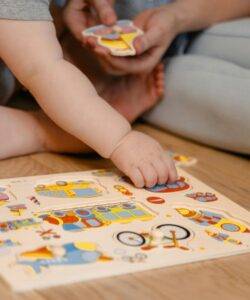Children naturally crave consistency, and routines provide the structure they need to navigate the complexities of growing up. When daily life follows a predictable pattern, children feel more secure and are better equipped to manage transitions, expectations, and responsibilities. Routines don’t just benefit kids; they also create a more harmonious environment for families.
This guide explores why routines are crucial for children’s development and offers practical strategies to help parents build and maintain them effectively.
What Is a Routine, and Why Does It Matter?
A routine is a set of regular activities performed in a specific order, often at the same time each day. For children, routines are a lifeline to predictability, offering a sense of control over their world. They help children understand what comes next, build trust in their environment, and develop habits that support long-term physical, emotional, and cognitive well-being.
According to research published by the American Academy of Pediatrics, routines create the scaffolding for healthy development by fostering resilience and reducing stress. From morning rituals to bedtime habits, routines ensure children feel safe, connected, and supported.
😀Emotional Stability Through Routine
One of the most significant benefits of routines is their ability to provide emotional security. Emotional stability is the cornerstone of a child’s overall well-being, and a predictable routine helps children regulate their emotions and manage stress.
Reducing Anxiety
Uncertainty can be overwhelming for children, leading to fear, frustration, and emotional outbursts. Routines offer a clear roadmap, reducing the stress that comes with not knowing what’s next. For example, a child who knows they will always have a bedtime story after brushing their teeth is less likely to resist going to bed.
Strengthening Emotional Regulation
When children follow a structured routine, they learn to anticipate and manage transitions, which fosters emotional regulation. For instance, a consistent pre-nap routine helps toddlers wind down and transition from active play to rest more easily.
Creating Opportunities for Bonding
Shared family routines, such as eating dinner together or enjoying a weekly movie night, strengthen the emotional bond between parents and children. These moments offer opportunities for meaningful conversations and emotional connection.
😀Routine in Physical Development
Routines not only provide emotional support but also encourage healthy physical habits. From consistent sleep schedules to regular meal times, these patterns help children develop a balanced and healthy lifestyle.
Establishing Healthy Sleep Patterns
Sleep is a cornerstone of physical health and development, particularly for children. Regular sleep routines signal the body when it’s time to wind down, ensuring children get the rest they need to grow and thrive. The National Sleep Foundation recommends that preschoolers sleep 10–13 hours a night, and consistent bedtimes are key to achieving this.
Encouraging Nutritious Eating Habits
Mealtime routines help children develop a healthy relationship with food. Sitting down together at regular intervals reinforces the importance of balanced meals and allows parents to model healthy eating habits. Over time, these practices promote mindful eating and prevent issues like picky eating or overeating.
Supporting Physical Activity
Routines that include designated times for outdoor play or structured physical activities, such as sports or dance, ensure children remain active. Physical activity not only supports their physical development but also boosts mood and improves focus.
😀Routines Impact Cognitive Growth
The structured nature of routines directly benefits cognitive development, helping children sharpen their problem-solving skills, improve focus, and foster creativity.
Teaching Time Management
Routines teach children how to manage their time effectively. For instance, a child who knows that homework comes before screen time is more likely to prioritize their responsibilities. Over time, this discipline enhances their ability to set goals and follow through with them.
Building Independence
By following predictable routines, children learn to complete tasks on their own. Activities like dressing themselves in the morning or packing their school bag become opportunities for independence, boosting their confidence and problem-solving skills.
Enhancing Focus and Memory
Routines help children process and retain information more effectively. For example, a consistent bedtime routine that includes reading can improve literacy skills by reinforcing language patterns and fostering a love of books.
Practical Steps for Creating Effective Routines
Establishing a routine may feel overwhelming at first, but with a few simple strategies, you can create a system that benefits the entire family.
1. Start with the Basics
Begin by identifying the most critical parts of your child’s day, such as waking up, mealtimes, and bedtime. Gradually build your routine around these anchor points to ensure consistency.
2. Use Visual Aids
For younger children, visual schedules with pictures or colorful charts can help them understand and follow routines. For example, a morning chart might show images of brushing teeth, eating breakfast, and putting on shoes.
3. Keep It Flexible
While consistency is essential, it’s also important to remain flexible. Life is unpredictable, and adjustments may be necessary for special occasions or unexpected events. The goal is to maintain a balance between structure and adaptability.
Overcoming Challenges When Establishing Routines
Even with the best intentions, sticking to structured activities can sometimes be challenging. Here are some bumps families run into—and how you can smooth them out. Below are solutions to common hurdles parents may face.
- Resistance from Children: Children often resist change, especially when it disrupts their current habits. To ease the transition, involve them in creating the daily schedule. Allowing them to choose between two options, like picking their bedtime story or selecting their morning snack, gives them a sense of control.
- Nights That Go Off Script: Maybe a child stays late with grandma, or you attend a party. Just return to normalcy the next day—consistency is built over many days, not one.
- Resistance to New Steps: If your child grumbles, add fun. Use a favorite song to signal “it’s brushing time,” or race to brush teeth—“Can you beat me to the sink?”
- Juggling Multiple Schedules: Busy families may find it challenging to coordinate daily activities around work, school, and extracurricular commitments. In these cases, focus on maintaining schedules for key moments, such as dinner or bedtime, and adjust other parts as needed.
- Sibling Differences: What works at age 3 vs. age 6 will differ. Let each child have their own chart or routine pace, but anchor together during shared times like dinner or story.
- Sticking to It as a Parent: Consistency starts with parents. It can be tempting to skip parts of the routine when you’re tired, but maintaining structure is vital. Tools like alarms, reminders, or even accountability from a partner can help keep routines on track.
How Bedtime Routines Set the Stage for Success
A solid bedtime daily activity is one of the most effective ways to ensure your child gets the rest they need. Here’s a step-by-step guide to crafting an effective bedtime ritual:
- Start at the Same Time Each Night: Aim for consistency, even on weekends.
- Create a Calming Atmosphere: Dim lights and turn off screens at least an hour before bed.
- Incorporate Relaxing Activities: Reading, storytelling, or light stretching can help your child unwind.
- Offer Comfort: A favorite blanket or stuffed animal can provide additional reassurance.
- Stick to Consistency: Over time, these habits will signal to your child that it’s time to sleep, leading to better rest.
For additional tips on promoting healthy sleep habits, visit Omegapediatrics.com in this article: 4 Ways to Promote Healthy Sleep Habits for Children
The Role of Routine in School Readiness
A consistent daily schedule helps children transition seamlessly into school life by teaching them the importance of structure and responsibility.
- Establishing Morning Readiness: A morning schedule that includes time for breakfast, packing school supplies, and personal hygiene helps children start their day on the right foot. These habits also minimize morning chaos and teach punctuality.
- Fostering Responsibility: When children are responsible for specific tasks—such as putting away toys or organizing their backpack—they learn accountability. These skills are crucial for success in a structured school environment.
Long-Term Benefits of Routine
The benefits of consistency extend far beyond childhood. The habits children develop now lay the groundwork for a lifetime of health, stability, and success.
- Building Resilience: Well-structured daily activities help children adapt to life’s changes more easily. By learning how to navigate transitions within a familiar framework, they are better prepared to handle challenges as they grow.
- Promoting Healthy Relationships: Daily activities that emphasize family time teach children the value of connection. Whether it’s shared meals or weekly game nights, these habits instill a sense of belonging that fosters healthy relationships in adulthood.
Embrace Daily Rhythms for Healthy Family Dynamics
Routine might sound ordinary. They are more than just schedules. For parents, they are an essential tool for raising happy, healthy, and confident children. It brings peace in the messy, busy moments. For children, it’s a superpower. It gives them the calm, confidence, and connection they need to flourish.
Every day, you’re laying bricks in a foundation of security, growth, and happiness. It’s not about being perfect. It’s about being consistent, flexible, and lovingly present. By starting small, remaining consistent, and adapting as needed, you can create a routine that benefits the entire family.
The investment you make in creating structure today will pay off for years to come. You’ve got this—and your child will feel it in every gentle step of your daily rhythm.
For more resources and tips on parenting and child development, explore the Omegapediatrics blog in this article: Child Development Should Be Tracked for Optimal Growth at Pediatrician Visits






